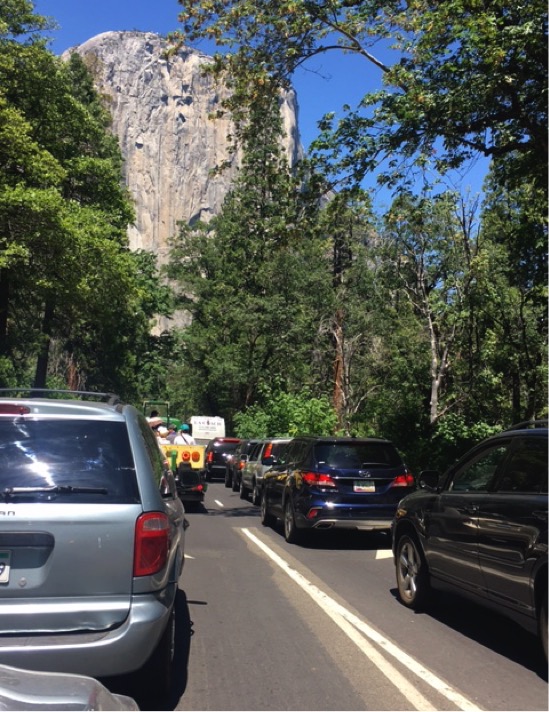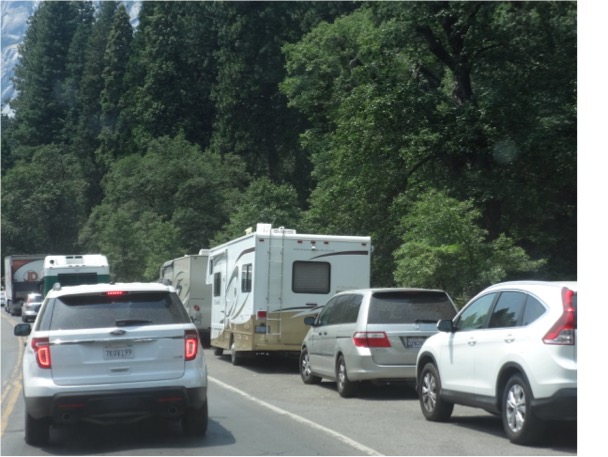Over the past two years, Yosemite Park has suffered from frequent times of gridlocked traffic jams during the intensely busy spring/summer peak visitation season. On many weekends and some weekdays, vehicles have been stuck at a standstill with delays that can last hours. Some who traveled for days to reach Yosemite end up being funneled in and out of the Park in a long line of bumper-to-bumper vehicles with no parking spaces open and no place to stop to actually experience Yosemite Valley.
At a fall season National Park Service meeting with local region business interests, Yosemite officials acknowledged there were times this year when traffic congestion was “unacceptable” and at odds with Park management objectives. Despite that acknowledgement, Park officials are not ready to test strategies (such as day-use visitation limits) to deal with congestion at the worst traffic location in the Park – the east end of Yosemite Valley.


Instead, Park staff outlined three ways the Park may deal with the problem in the coming year. They aim to do a better job of managing vehicles, especially when no parking spaces are vacant on busy days. They aim to do more to encourage visitors to use buses, rather than arriving in private vehicles. And the Park intends to do “more modeling and studies” to better understand what Park visitors want.
At that meeting, CSERC shared frustration with Park staff – pointing out that 17 years ago a major plan for Yosemite Park called for phasing private vehicles out of Yosemite Valley – yet the opposite has been allowed. More cars crowd into Yosemite Valley now than ever. We expressed disappointment that Park leaders are again postponing any meaningful action to take steps to reduce traffic congestion and crowding.
Change can be difficult to accept for a place as iconic as Yosemite – a place where so many have special memories of visits with family or friends. But change is needed. John Muir would be appalled to see the level of commercialism, crowding, and vehicle congestion that is all too often the norm during the busy spring/summer season.
On top of the significant issue of crowding and traffic, a major controversy has resulted from government plans to boost the Yosemite entrance fee for a family in a vehicle from $30 all the way up to $70. CSERC opposes such a huge spike in the entrance fee because it would further diminish visits to Yosemite by low-income minority community citizens. Yosemite (and many other national parks that would also boost entrance fees) would become primarily a destination for the wealthier slice of America. As a result, fewer people would connect to nature by having a national park experience.

